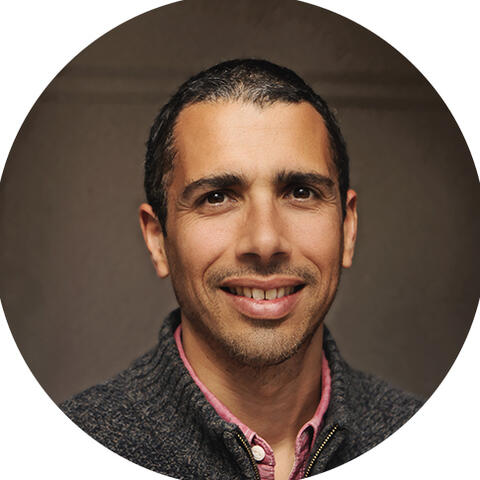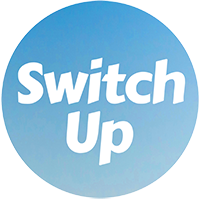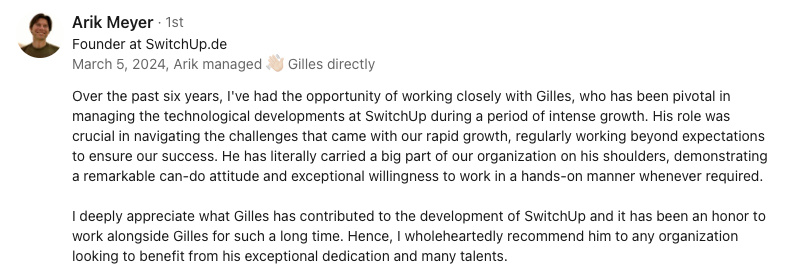Abstract:
The article advocates for a minimalist approach to career resilience in the tech industry by introducing the concept of a "career buffer"—a simple, focused layer of support that replaces complex backup plans and over-diversification. Rather than spreading oneself thin with endless fallback options or accumulating a vast but shallow network, the article suggests building resilience through a handful of high-quality skills, small side projects, and strong, trusted relationships. It emphasizes practical routines like micro-optionalities (small, manageable skill additions or projects), time-blocked experimentation, and purposeful slack in one’s schedule to allow for flexibility and serendipity without causing overwhelm. Drawing on research and personal anecdotes—such as tech workers weathering downturns by teaching or freelancing—the article highlights how minimalist buffers, like regular check-ins and deep peer connections, are more effective and less stressful than exhaustive planning. Ultimately, it encourages tech professionals to trust in “just enough” preparation, using light, regular reviews to maintain a career buffer that offers both peace of mind and the freedom to adapt, learn, and pursue meaningful opportunities without unnecessary clutter or anxiety.
Navigating a tech career often means getting ready for surprises. Change comes fast. Sometimes, I feel like I’m on a road with lots of bumps and no signs. Who wouldn’t want a little cushion to soften the ride? Here’s what I use for that: the career buffer. Instead of juggling endless backup plans or spreading myself thin, I keep a simple buffer—just enough support to handle surprises without extra stress or clutter.
I’ve found that a light, focused set of resources gives me peace of mind and flexibility. In this article, I’ll share what a career buffer is, why classic safety nets don’t always work, and how small skills, side projects, and easy routines make up a better safety net—one that doesn’t weigh me down. I’ll also show how I build resilience with time-blocked experiments and quiet moments for chance events. I’ll discuss why a few solid relationships beat lots of loose contacts, and how learning to say “enough” helps me avoid burnout.
I try to blend practical advice with a bit of humor, keeping career resilience simple and doable. If you prefer minimalism or just want to feel less overwhelmed by plans, I hope you’ll find these down-to-earth ideas helpful for keeping your career steady and flexible.
The career buffer for tech pros
Understanding the career buffer
Adapting to changes in tech can feel like a rough ride. That’s where my career buffer helps. It’s a small, reliable cushion for my work life—not a pile of fallback plans, but a simple layer of resources and choices. Unlike the complex setup of traditional safety nets, my buffer is light and easy to manage. It helps me handle surprises without adding extra stress.
The main idea is to build resilience right into daily habits and work structures. I take inspiration from antifragility and portfolio thinking. For me, a career buffer means having just enough flexibility—like a good suspension, not a garage full of spare tires. As a minimalist, I rely on simple routines that turn career changes from scary events into regular steps. This practical approach keeps things running smoothly and avoids overwhelm.
I’ve learned that a few high-quality pieces are enough for a strong buffer:
- Related skills (like learning a new tech tool or language)
- Flexible jobs (short-term projects or consulting)
- Supportive peers or small learning groups
Quality matters more than quantity. A handful of flexible skills and strong ties protect me more than a pile of backup plans. Why do old-school backup strategies and too much diversification cause more trouble than help?
Why backup plans and over-diversification fall short
I used to try keeping track of a few backup plans, loads of side courses, and a growing list of “just in case” skills. Instead of feeling safe, I got distracted and less invested in my main job. Studies suggest that fancy fallback plans can actually weaken your focus and drive, making it less likely to succeed at what really matters. Too many side jobs or skills bring other problems too.
Trying to cover everything at once made my expertise thin and overwhelmed my mind. In tech, deep and standout skills get noticed more than knowing a little of everything. I’ve seen generalists blend in, while those with clear, strong skills shine and are valued in a tight job market. As a minimalist, I see that a few strong buffers work much better than trying to cover every base.
Over-preparation is exhausting—like packing my whole closet for a weekend away. I found that focusing on just a couple of key skills or a trusted peer group gives me better protection without burnout. It’s like packing light: only what I need. This keeps things sustainable, nimble, and ready for whatever pops up. Let me show how this works using micro-optionalities.
Micro-optionalities in action
Small moves, big impact
Micro-optionalities are like having a few well-placed stepping stones—I can cross a stream without building a whole bridge. In tech, keeping up a single extra skill goes a long way. For example:
- As a backend developer, I learned the basics of DevOps.
- As a data analyst, I picked up cloud computing basics.
- As a product manager, I explored simple UX design.
Industry trends show that one extra skill can lead to new job chances and make tough moments like layoffs a bit easier. The best part is, micro-optionalities aren’t only about skills—they can be mini projects too.
A common move for me is to take on a small freelance gig, even for just a few hours a week. For instance, when I worked as a designer, I sometimes helped a startup now and then—this kept my network warm and my skills sharp. Teaching in coding communities is another easy buffer. Even a single workshop a month can lead to new trends, contacts, or even job offers. Open-source contributions work the same way—just a few hours on weekends can boost my presence in the tech world.
This kind of light, low-stress work doesn’t eat up much time, but it quietly lifts my confidence and keeps me sharp. How do these micro-optionalities stay chill and not end up causing more stress?
Keeping it light and sustainable
Unlike big side hustles, micro-optionalities are quick to start and easy to pause. They fit right into my normal week—like snacks, not full meals. These small moves need little time or effort but give a steady sense of backup. And they often bring those lucky surprises and helpful contacts that bigger commitments can never offer.
Staying active in small ways leads to good luck—what some call serendipity. For example, a mini teaching gig might get me a new client, and an open-source project could bring in a future work partner. If I don’t want to chase every new trend, micro-optionalities are a gentle way to keep options open.
With just the right amount of backup, I feel secure without losing focus. Minimalist buffers let me stay safe without clutter. Next, I’ll show how I build these buffers into my weekly routine.
Simple routines for resilience
Time-blocked optionality sprints
No one needs to become an expert all at once. One helpful habit I use is to set a regular, fixed time slot—like one hour a month—to try out a new tool, market, or way of working. Here’s my simple plan:
1. Pick something nearby I’m curious about (maybe a new language, maybe a design tool).
2. Put a regular slot on my calendar—one hour will do.
3. Use that time to test, with no pressure to master it.
These small, steady experiments keep my skills fresh but low effort. This minimal approach fits even a busy week and keeps me flexible without stress.
Over time, all these little tries add up. It’s like putting one toe in a cold pool before I jump in. Each try makes big changes less scary. These experiments slowly build my confidence that I can handle what’s next—without always needing to learn something new. Regular sprints like this create true resilience. But how do I find space for these sprints if I’m already fully booked?
Building slack into schedules
Leaving intentional gaps in my week—free hours or a whole open afternoon—creates room for surprises, recovery, and quick changes. Think of it as white space in good design: it’s not nothing, it actually makes things work better. Purposeful slack in my calendar is my trick for staying creative and calm.
This helps to avoid the too-much stress, you know? When my calendar isn’t packed, it’s easier to react to new things or just rest. Blocking a few open hours weekly gives me the option to pick up a promising project—or simply enjoy a break.
After moving from Berlin to Lisbon, I sometimes felt isolated, especially when working remotely. Leaving intentional gaps in my week helped me cope with the isolation and gave me space to recharge mentally. Maybe I have an ‘open’ afternoon every week or refuse to book every gap with meetings. Small habits like these bring fresh ideas and support my well-being. Years juggling leadership with hands-on work in quick-moving places showed me that the best ideas often showed up in the quiet time, not in back-to-back calls. Relationships really benefit from these quiet spaces too—they’re much easier to build and maintain this way.
Relationships as a buffer
Building a focused network
Trusted colleagues can open doors, help in tough times, or share opportunities. In tech, regular peer groups—like mastermind circles or online communities—often raise job satisfaction and help with both knowledge and connections. Research shows these small, tight groups are best for feedback and sharing leads. Instead of keeping up with a massive network, a few close peers are often much more useful.
As a minimalist, I get the best results with deep, not wide, networks. A small crew can share job tips and emotional support during changes—much more than a giant contact list. There’s a big difference between a few people who know me well and a huge list of folks who barely remember my name. Deeper relationships are better for resilience.
Investing in these close ties trims the noise and brings more clear chances to act. Instead of chasing every contact, focusing on a strong, small network lets me spot and grab the right opportunities. To avoid endless networking, I focus on quality first—nurturing a couple of key relationships and letting the rest go.
Minimalist networking in practice
Minimalist networking works when it’s simple and doesn’t take much time. I don’t need massive events or huge lists. Here’s what I do:
1. Send a check-in message to a peer now and then.
2. Offer a quick favor if I see a chance.
3. Book a short virtual coffee talk every few months with someone I respect.
Small, steady gestures count more than big, dramatic efforts. They keep relationships alive and real, but aren’t draining.
This kind of networking avoids the overwork and awkwardness of traditional methods. For example, trading a few ideas with a peer sparks useful thinking, and a quarterly coffee chat might bring fresh possibilities. Working together with one or two trusted contacts—even just a small shared project—can mean big returns. These regular touchpoints make relationships strong and lasting.
With this approach, I save time and skip stress, while building a reliable, robust buffer for my career. A close network is both easier and more effective for keeping my options open. Sometimes, the best chances come from relying on my strong circle instead of trying to plan for everything.
Letting go of over-planning
Knowing when enough is enough
Trying to build the perfect safety net is like wrapping my whole career in bubble wrap—funny to imagine, impossible to keep up. At some point, I had to ask myself: how many plans do I really need to feel safe? The minimalist answer is “enough”—knowing my limit and trusting that I can adapt to the rest. Research on satisficing says peace of mind comes from knowing when to stop planning and start trusting my buffer.
After years of chasing every possible backup plan, I realized that peace of mind only came when I learned to trust my buffer and stop over-preparing. Chasing perfect safety is more likely to cause anxiety and wasted effort. Over-planning can freeze me up and make me tired for no reason—like stacking sandbags for a flood that might never arrive.
Here’s how I keep things simple:
- I use small rules and easy reviews instead of switching everything at the smallest sign of trouble.
- I see my buffer as a well-pruned tree, not a fortress built for anything that might happen.
- I do quick, regular reviews to keep my buffer strong.
Quick review routines
Short, scheduled check-ins help keep my career buffer in shape with little trouble. Here’s my routine:
1. Every three to six months, I do a self-assessment worksheet to see my skills and chances.
2. I run a quick personal SWOT analysis to spot weaknesses or new paths.
3. I map my network to focus on the most useful relationships.
I put a recurring date for these reviews—every three to six months makes it a habit. This keeps my skills and network up to date and shows risks early. For example, a reminder on my calendar means I can do a quick audit or freshen up my network—like changing batteries in my smoke alarm.
These reviews aren’t about perfection. They’re about keeping my buffer light and handy for my current needs. Moving forward is what counts, not getting every detail covered. With easy routines, I have a career buffer that grows with me—no need for a fortress, just enough to keep me steady.
Stories from the field
How buffers enable smooth pivots
When the dot-com bubble burst, many engineers suddenly lost jobs. Some kept going by teaching part-time or mentoring others—this brought in a bit of money, but more importantly, new contacts that later led to jobs. Teaching and mentoring turned out to be a buffer: simple and minimalist, yet both a safety net and a springboard for the future.
When I co-founded a cross-border e-commerce platform in Shanghai, I relied on a small group of trusted collaborators to weather unpredictable market shifts—this minimalist approach to networking made all the difference. I remember one month when a sudden regulatory change threatened our business model. Because I had kept my network focused and strong, we quickly found a local partner who helped us adapt, rather than scrambling to reach out to dozens of weak contacts.
Freelancers have also learned that small, flexible projects help during tough times. Maybe a developer teams up with someone for a short job, sharing skills and reducing risk without locking into a long deal. These partnerships can lead to new work streams or become lasting partnerships. Even a tiny project can grow into something much bigger.
As CTO in Berlin, I introduced data-driven decision-making to our business operations. By focusing on a few key metrics and regular, minimalist reviews, we improved our efficiency by 20% in just six months. This experience taught me that minimalist buffers—just enough data, just enough backup—can have measurable results.
Product managers sometimes keep a small consulting job or a once-in-awhile teaching spot open. When layoffs arrive, those with even a tiny buffer manage transitions better—it means less stress and more breathing room to find the right next step. The big lesson: a handful of simple, low-effort buffers make career changes less scary for anyone in tech.
When I managed a multicultural team in Beijing, I saw firsthand how a small, trusted network could help us navigate cultural misunderstandings and sudden changes. We didn’t need a huge network—just a few reliable people who understood our goals and challenges.
Build your minimalist buffer
Your micro-optionality worksheet
Starting a minimalist career buffer is easy once I know what I already have. Here’s what I do:
- List out my current close skills, small projects, and any ongoing community work.
- Highlight the easy ones—the ones I’d tap into first if things changed suddenly. That’s the base of my buffer.
Then, I map my core network. Who are the three to five trusted collaborators I could lean on? When did I last talk to them? Maybe I reach out for a chat or tiny project to keep those ties strong. Even a tiny, trusted network is a powerful buffer.
I don’t forget quick, regular reviews. I set a calendar alarm for a quarterly check-in—maybe with a one-page worksheet to see what’s working and what could use a little change. These check-ins keep my buffer tight and stress low, like a simple audit.
The skill-scan method for annual self-assessmentEach year, I run a skill-scan to identify adjacent skills that could strengthen my buffer. Here’s how:
1. List my current core skills and projects.
2. For each, ask: What’s the next adjacent skill or tool that would make me more flexible? (For example, if I’m strong in backend development, maybe DevOps or cloud basics.)
3. Choose one adjacent skill to focus on for the year.
4. Schedule a quarterly review to track my progress and adjust if needed.
This keeps my buffer fresh and ensures I’m always ready for the next shift—without spreading myself too thin.
Mini-framework: Two-step action exercise- Identify one adjacent skill to learn this year using the skill-scan method.
- Schedule a quarterly review to track your progress and update your buffer.
Remember, a buffer is not about being perfect. The whole goal is to have just enough breathing room in my work life to roll with surprises—without filling my days with worry or clutter. I aim for “just enough”—not more. I trust that with a few key steps, I’ll stay calm and ready for whatever rolls my way.
A minimalist career buffer doesn’t mean making a wall of fallback plans. It’s having just enough support to adjust when things change. By leaning on a few close skills, simple habits, and real relationships, I shape a safety net that doesn’t cause extra stress. I let go of over-planning, save my energy for what matters, and use light, regular check-ins to make sure my buffer works for me. This clear approach gives me peace of mind and leaves space for learning, growing, and a few good surprises. Best of all, it works quietly in the background so I can focus on what really counts.














